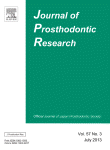Special Edition
Volume 57, Issue 3
Displaying 1-14 of 14 articles from this issue
- |<
- <
- 1
- >
- >|
Editorial
-
2013Volume 57Issue 3 Pages 151-152
Published: 2013
Released on J-STAGE: October 12, 2013
Download PDF (261K)
Expert consensus
-
2013Volume 57Issue 3 Pages 153-155
Published: 2013
Released on J-STAGE: October 12, 2013
Download PDF (275K)
Original articles
-
2013Volume 57Issue 3 Pages 156-161
Published: 2013
Released on J-STAGE: October 12, 2013
Download PDF (603K) -
2013Volume 57Issue 3 Pages 162-168
Published: 2013
Released on J-STAGE: October 12, 2013
Download PDF (1431K) -
2013Volume 57Issue 3 Pages 169-178
Published: 2013
Released on J-STAGE: October 12, 2013
Download PDF (1879K) -
2013Volume 57Issue 3 Pages 179-185
Published: 2013
Released on J-STAGE: October 12, 2013
Download PDF (684K) -
2013Volume 57Issue 3 Pages 186-194
Published: 2013
Released on J-STAGE: October 12, 2013
Download PDF (1677K) -
2013Volume 57Issue 3 Pages 195-199
Published: 2013
Released on J-STAGE: October 12, 2013
Download PDF (655K) -
2013Volume 57Issue 3 Pages 200-205
Published: 2013
Released on J-STAGE: October 12, 2013
Download PDF (401K) -
2013Volume 57Issue 3 Pages 206-212
Published: 2013
Released on J-STAGE: October 12, 2013
Download PDF (1607K) -
2013Volume 57Issue 3 Pages 213-218
Published: 2013
Released on J-STAGE: October 12, 2013
Download PDF (820K) -
2013Volume 57Issue 3 Pages 219-223
Published: 2013
Released on J-STAGE: October 12, 2013
Download PDF (1086K)
Case report
-
2013Volume 57Issue 3 Pages 224-231
Published: 2013
Released on J-STAGE: October 12, 2013
Download PDF (3244K)
Erratum
-
2013Volume 57Issue 3 Pages 232
Published: 2013
Released on J-STAGE: October 12, 2013
Download PDF (459K)
- |<
- <
- 1
- >
- >|
